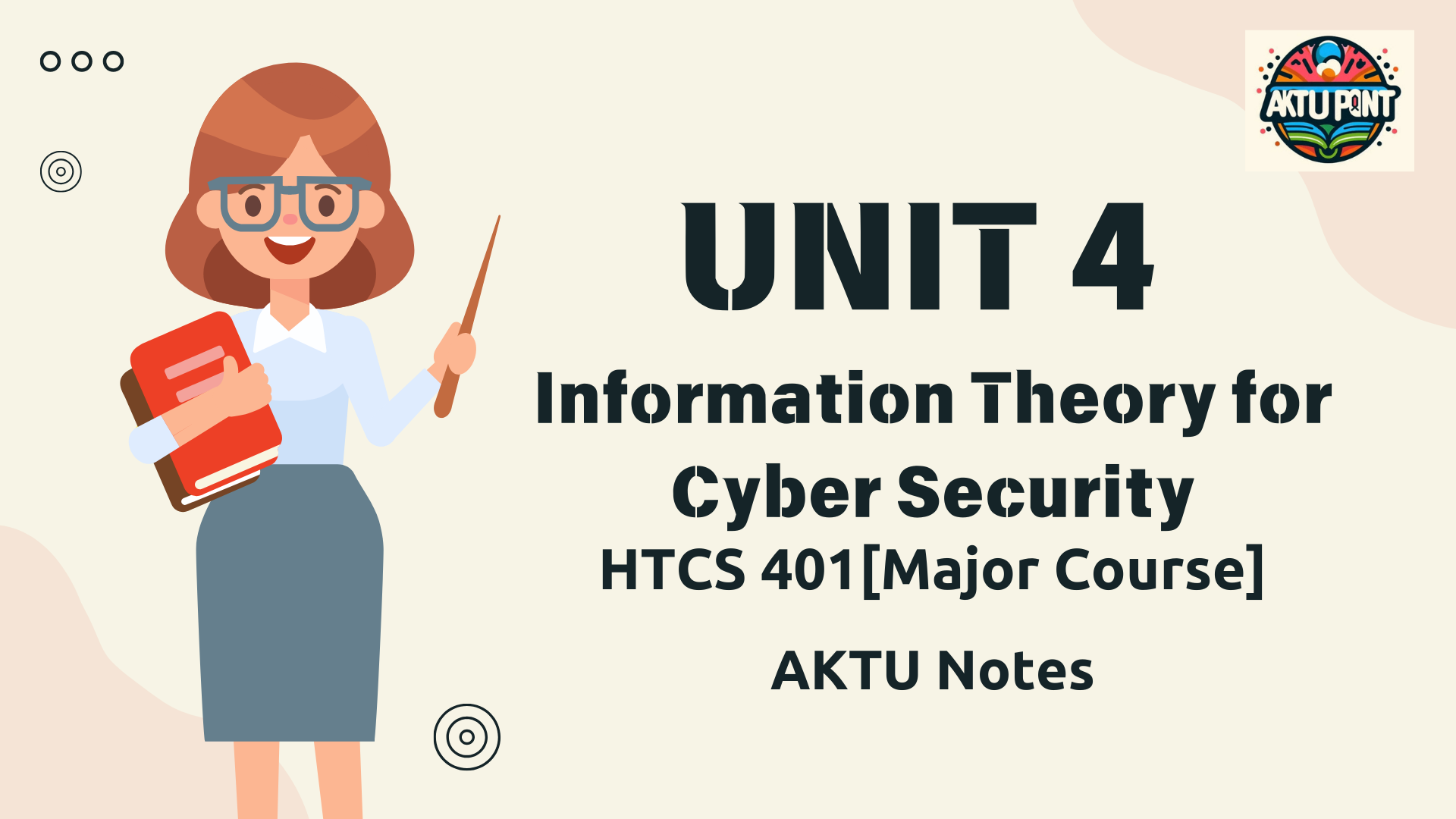Unit 4 Information Theory for Cybersecurity Notes | HTCS401 Notes | Aktu Notes
Secrecy Metrics
- Secrecy metrics quantify the level of secrecy achieved in cryptographic systems.
- They assess the strength of encryption and protection against different types of attacks.
Types:
- Strong Secrecy: Ensures that the plaintext is completely hidden from an adversary, even with unlimited computational resources.
- Weak Secrecy: Provides probabilistic guarantees that an adversary cannot deduce the plaintext with high probability.
- Semantic Security: Guarantees that ciphertexts provide no additional information about the plaintext other than its length.
Example:
AES encryption achieves strong secrecy by ensuring that the ciphertext reveals no information about the plaintext without the decryption key.
Secure Source Coding
- Secure source coding refers to encoding information with minimal distortion while maintaining confidentiality.
- It balances the trade-off between compression (rate) and preservation of secrecy (distortion).
Rate-Distortion Theory:
- Quantifies the minimum rate (bits per symbol) required to transmit information at a given distortion level.
- Essential for designing efficient and secure communication systems.
Example:
JPEG encryption uses rate-distortion theory to compress images while preserving visual quality, ensuring that sensitive details remain hidden from unauthorized viewers.
Side Information at Receivers
- Side information refers to additional knowledge available to the receiver that can aid in decoding or understanding the transmitted information.
- Crucial for optimizing communication efficiency and security.
Usage:
- In data compression, side information helps receivers reconstruct data more accurately by leveraging known patterns or context.
- In cryptography, side information can be exploited by adversaries in side-channel attacks to weaken encryption.
Example:
A receiver with knowledge of common phrases or context-specific vocabulary can better decode encrypted messages, reducing error rates in communication.
Differential Privacy
- Differential privacy ensures that the inclusion or exclusion of an individual's data does not significantly affect the outcome of queries or analyses.
- Protects individuals' privacy while allowing useful statistical analysis of datasets.
Mechanisms:
- Noise Addition: Injecting random noise into query responses to mask individual contributions.
- Data Perturbation: Modifying data slightly to maintain privacy without compromising the overall integrity of analyses.
Example:
Google uses differential privacy techniques to anonymize search queries and location data, preventing identification of individual users while improving personalized search results.
Distributed Channel Synthesis
- Distributed channel synthesis involves designing communication channels that span multiple nodes or devices.
- Ensures secure and efficient data transmission in distributed systems.
Challenges:
- Reliability: Ensuring data reaches its destination without loss or interception.
- Security: Protecting data against eavesdropping and unauthorized access.
- Efficiency: Minimizing latency and maximizing throughput in distributed networks.
Example:
- Blockchain networks employ distributed channel synthesis to validate and record transactions across multiple nodes securely, ensuring consensus and data integrity.
These notes provide a comprehensive overview of secrecy metrics, secure source coding, differential privacy, and distributed channel synthesis in the context of information theory for cybersecurity. Understanding these concepts is essential for designing and implementing robust security measures in digital communication and data handling systems.






No comments:
Post a Comment